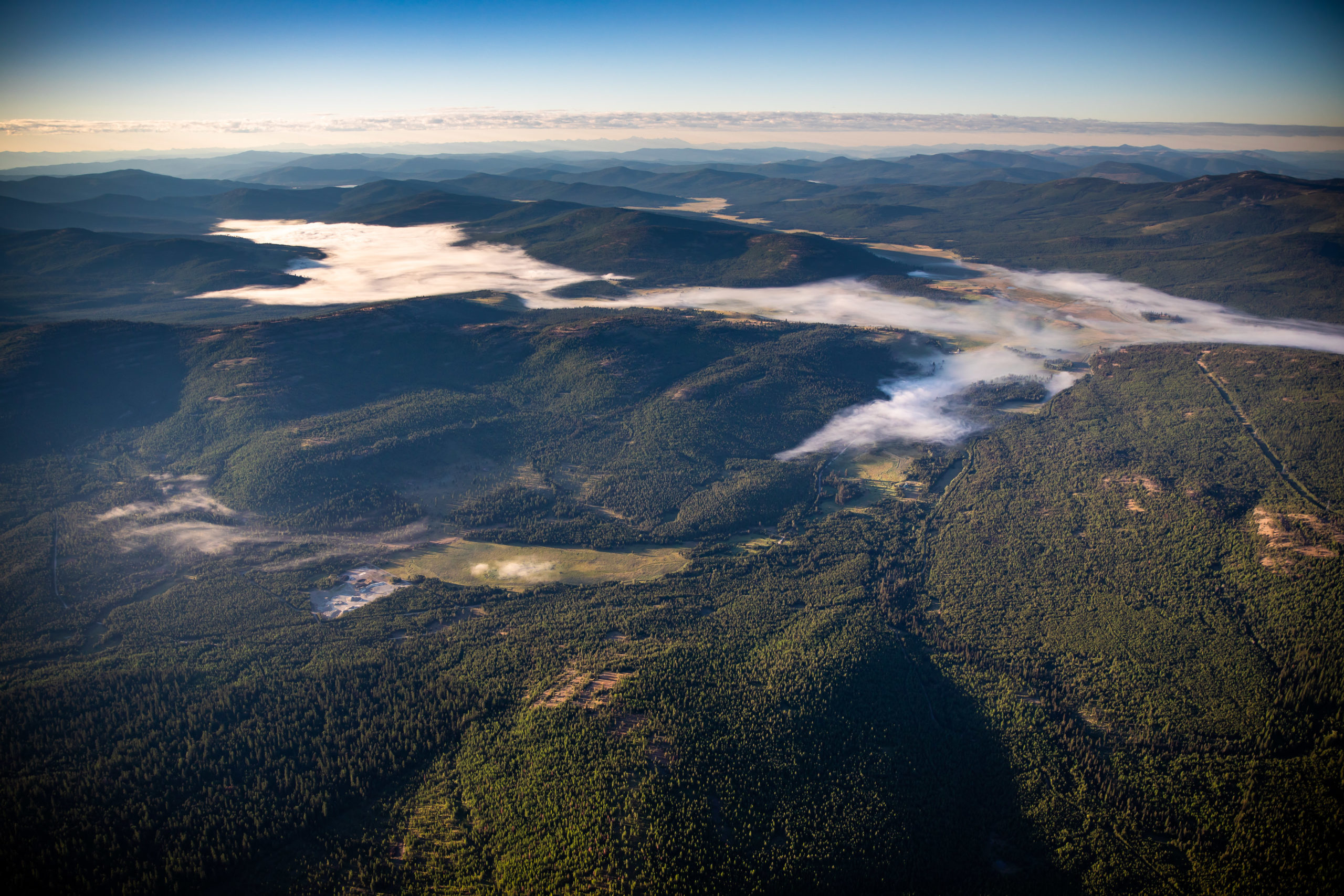A proposed conservation easement on nearly 7,300 acres of private forestland near Marion could move forward next week with approval from the Montana Fish and Wildlife Commission, setting in place a critical piece of a landscape-scale conservation puzzle that state and federal agencies have been working to assemble for 20 years.
The proposal by Montana Fish, Wildlife and Parks (FWP) goes before the Fish and Wildlife Commission on Dec. 10, and is one of several complementary pieces set to move into position as a sequence of land deals unfolds. If everything aligns, the arrangement would ultimately furnish permanent protections on more than 230,000 acres of prime hunting and timberland west of Kalispell, preserving key wildlife habitat from development while allowing timber production and recreation to continue uninhibited.
The Lost Trail Conservation Easement that FWP is proposing would dovetail with a separate proposal by the U.S. Fish and Wildlife service to acquire up to 100,000 acres through its Lost Trail Conservation Area project, which is also being negotiated with current landowner Georgia-based Southern Pine Plantations (SPP).
The majority of the property in both projects is owned by SPP, a real estate and timberland investment firm that paid $145 million in cash to the previous owner, Weyerhaeuser Co., in exchange for 630,000 acres, initially raising concerns among public land users in the region about whether the new owner might subdivide the parcels and sell them for private development.
The degree of concern generated by the land sale is testament to the importance of the lands to wildlife habitat and for hunting and recreation.
However, SPP has pledged to maintain longstanding access agreements allowing the public to use the lands for hunting, fishing and recreation and to continue negotiating permanent protections. That pledge remains in place despite the Nov. 2 announcement that SPP was selling nearly half of its newly acquired acreage, including parcels within the easement boundary, to Green Diamond Resource Company, which owns working forest lands in Washington, Oregon, California, and now — following its purchase of 291,000 acres west of Kalispell — Montana.
Like its predecessors at SPP, and before that at Weyerhaeuser Co., officials at Green Diamond said access and conservation would remain top priorities as they engage management agencies and partner with stakeholders, including on the proposed conservation deals.
“FWP will still be closing this conservation easement with SPP as proposed, and the pending transfer of ownership does not change any aspect of the environmental assessment other than the eventual owner of this property,” according to FWP’s decision notice for the Lost Trail Conservation Easement.
The easements would protect parcels in both Flathead and Lincoln counties from private development in perpetuity while also ensuring continued public access, as well as allowing the property to be sustainably managed for timber production.
The FWP proposal set for consideration next week would authorize the purchase of a conservation easement to protect a single block of timberland and wildlife habitat west of Kalispell — a transaction that would dovetail with the FWS proposal because it shares a nearly 7-mile border with the Lost Trail National Wildlife Refuge and more than 4,000 acres of Wetland Reserve Program easements, which are held by the National Resources Conservation Service.
Jim Williams, regional supervisor for FWP’s Region 1, said the area provides some of the best elk and deer hunting in Northwest Montana, and the state agency has long worked to allow hunters and recreationists to access the private land through its block management program. In the past, FWP has secured permanent land conservation projects nearby in the Thompson and Fisher river corridors, and its progress on the 7,300 acres south of the Lost Trail National Wildlife Refuge, on Dredger Ridge, would be similar.
The culmination of the proposed easements would amount to a landscape-scale conservation project, Williams said, giving credit to both FWS and private landowners for recognizing the value of maintaining access and expanding protections for wildlife habitat, including elk and grizzly bears that use the area as a migration corridor, while also allowing for sustainable logging.
The proposed easement’s appraised value is $4.5 million, though its purchase prices will not exceed $4.3 million, according to the decision notice.
Montana’s congressional delegation is expected to fully support the land deals, both of which would use federal Land and Water Conservation Fund (LWCF) dollars to purchase the easements within the conservation area, as well as money from private philanthropy. That funding is derived from federal offshore oil and gas leasing royalties and not taxpayer dollars.
Correction: An earlier version of this story incorrectly stated that the land transactions proposed separately by Montana Fish, Wildlife and Parks and the U.S. Fish and Wildlife Service were contingent on one another’s success. Although they are complementary, they are not procedurally connected.
